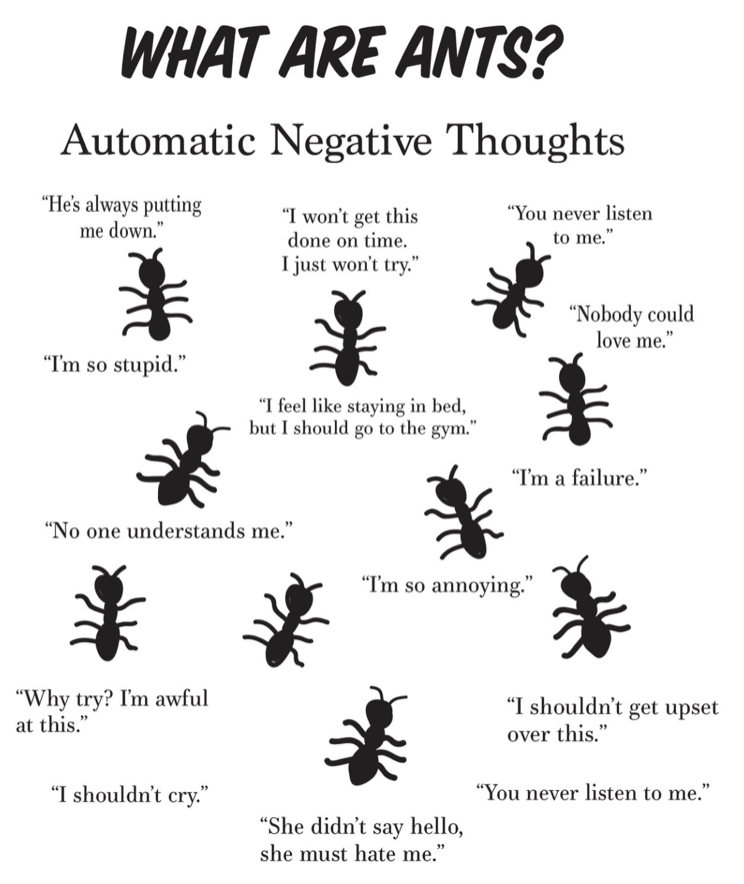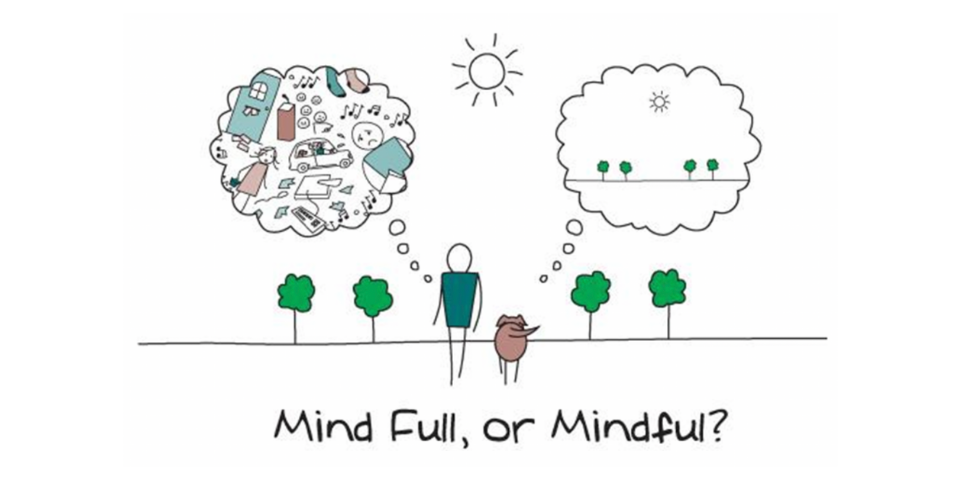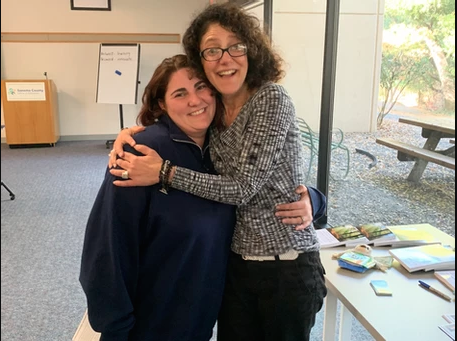Helping Our Children Challenge Negative Thinking
By Wendy Witham, LMFT
Talking with our Kids
Along with nurturing attachment and validating emotions, talking with our kids about their thoughts can help them develop self-awareness and connect thoughts, feelings and behaviors, to manage them in a more regulated way.
The concept of thoughts can be abstract for children, so we can make the concepts concrete and give them opportunities to practice and break down the skills they need to observe, understand and change unhelpful thinking. Practicing new ways of thinking creates new pathways in the brain, and new thinking takes hold to become more automatic.
It is always important to first empathize and help a child understand their feelings. When a child is negative, we can help by recognizing the feelings. “It sounds like you’re really upset.” “You look really sad. It must have been upsetting that…” “You seem frustrated about that.” “That sounds annoying.” “That must have been hard to handle.”
When children are emotionally upset, their thoughts can be unclear, confusing or overwhelming. Teaching a way to stop and relax as a first step is important. For example, we can say, “Your mind is full right now. Let’s take a few deep breaths and try to relax for a few moments. Then we can figure things out.”
Observing Thoughts
Another skill is to teach about observing thoughts. One way to picture this is to think of thoughts like leaves floating along a river. They are not necessarily good or bad, but we can choose which ones are helpful and good to focus on, and which thoughts we can let float by without paying more attention to them.

Automatic Negative Thoughts
Trauma, depression and anxiety can cause patterns of negative thinking to take hold in children. These are sometimes called automatic negative thoughts, or ANTS. This may be where a child’s mind tends to go first. We can help them identify their ANTS and then add some new, positive and more balanced thoughts to take hold of instead. Then we can help them evaluate these thoughts and consider how they might reshape them into something more accurate and helpful. For example, “I stink at math” could become “some parts of math are hard for me. But there are many others that I can do.”
Children can create a short list of the types of negative thoughts, or ANTS, they often have. From this list they can come up with ways to change these types of thoughts.
We can help a child separate negative thoughts from themselves, or to externalize the thoughts, by labeling them or giving them a name, such as the Inner Critic, Mean Brain, Stormin’ Stu, or the Worried Weatherman. Your child can come up with labels for these patterns of thinking to be able to externalize, observe, and choose to reject the negative thoughts. This lets you say, “Sounds like Stormin’ Stu is making you feel angry and left out. That sounds like a Worried Weatherman thought. But you’re the boss of those thoughts. You can talk back to Mean Brain.” Your child can then ask themselves if that thought is true or false.
Once we separate negative thoughts from the child, they can do some reality checking of their thoughts. Have them ask themselves, “What am I saying to myself about this? How true is it? Is it helpful to think this way? Where will it get me? What else can I think instead? It is important not to contradict your child. Instead when you ask your child these sorts of questions you help them to come up with other ways of thinking that may be helpful.
Another way to assess and change thinking is to evaluate an event and the associated thoughts and feelings, to see if changing perspective on the event will help. The things we think are not automatically true. When creating a new thought, it can help to see the situation in a different manner.
For example:
What Happened: Emma, my best friend, did not talk to me like she normally does.
Thoughts: I thought “Emma hasn’t talked to me much this week. She must be mad at me.
Feelings: I felt hurt and sad.
Let’s look at three different thoughts from our example and see how it changes things.
New Thought: “Emma could be upset with me, but maybe not. I don’t know.”
New Feeling: Concerned that my friend may be upset, but I am not feeling sad like I did before
New Thought: “Emma is probably busy with school or something”
New Feeling: Disappointed that she hasn’t spoken to me, but I understand.
New Thought: “Maybe Emma is upset about something that has nothing to do with me”
New Feeling: Worried about Emma’s feelings.
We can help our child go through these questions to figure out their own thoughts and feelings:
What Happened?
Your Thoughts
Your feelings
Practicing Positive Self-Talk
Help a child come up with a few key phrases they can repeat as reminders. For example, say they have negative thoughts before presenting a book report to their class. They are worried that they will forget what to say. Their positive self-talk could be “I am a good student and I do well when I prepare.”
If you go back to the list of common negative thoughts the child has, this is a great place to write down simple, positive thoughts they can say instead.
Helping our child learn new ways of thinking does not mean denying negative or hurtful thoughts that are true or factual. This negates the child’s experiences. Instead, we want to encourage them to evaluate their thoughts, to modify them if appropriate and to be able to focus on thinking that is helpful for them at any given time. Changing patterns of thinking takes time and practice. It is one of many skills our child is learning and practicing as they grow and heal. We must be patient and gentle as we encourage them to develop new ways of looking at themselves and their experiences.
Wendy Witham, LMFT, is a therapist in private practice for 30 years who has worked with teens, adults and families around a variety of concerns. As a single, International adoptive parent with a grown daughter, Wendy is a member of our Help One Child family network, blog and podcast contributors, parent trainer and co-facilitator for the Parents of Teens+ Support Group.










